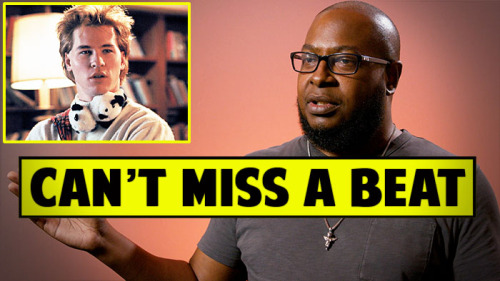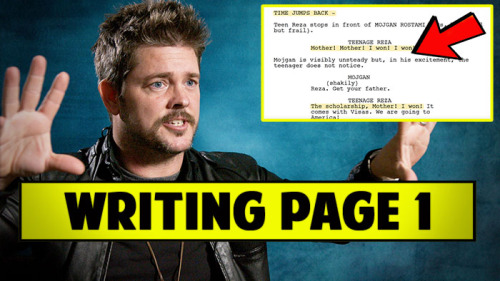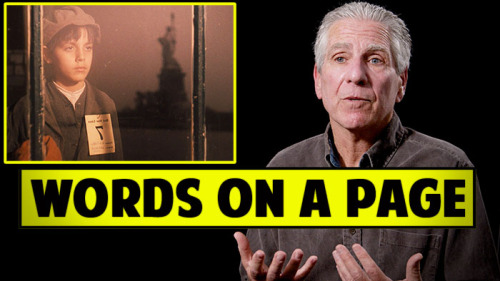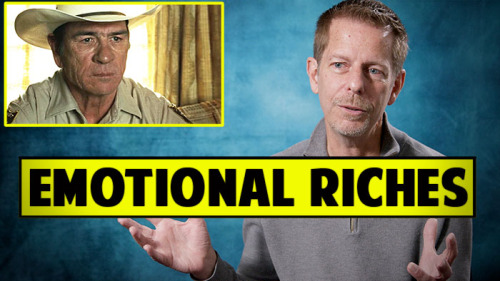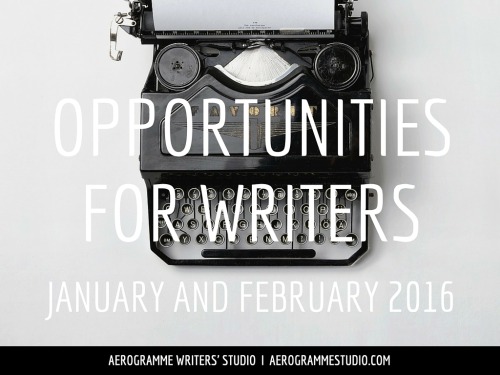#screenwriting
Literally this incident with the Supernatural finale is why I want to become a screenwriter/director (surprisingly) to avoid absolute shit like this and uphold the ideal that fans need to be listened to, especially when creating a series of books/movies/shows.
When you share a story with fans, they become the canon writers too
Opportunities for Writers in January and February 2016
Writing contents, publication opportunities, fellowships and more
Post link
We all know I am a huge plotter – like excel spreadsheet level – but I wasn’t always like this. I’ve used many methods in the past and here are the best ones:
The Big Plot Points
In this method, you simply write out the big points like the catalyst, the midpoint, the climax and any big plot twists in your story. This helps you keep in mind the focus of your story as you write it, without actually plotting.
Baby Steps
More detailed than the Big Plot Points, Baby Steps involves writing all the little plot points down in chronological order. Think of it like a list of directions that get you from the first page to the end of the story. You can stray from the path, but this helps you know exactly where you’re going and what you want to achieve along the way.
Next 10 Steps
This is one I used a lot when writing fanfic in conjunction with the Big Plot Points. Here I would literally plan out the next 10 things that I wanted to happen in the story and treat it as a mini arc. If I’d known more about story structure, I could have done this 4 times and ended up with 4 acts (1, 2a, 2b, and 3). Instead, I did it 6 times and ending up with 170k words… don’t be me.
Save the Cat! Beat Sheet
An industry classic, the 15 beats of Save the Cat! can help you outline all the key moments that shape a story without interfering with panster discovery fun. This method breaks each of the 4 acts mentioned above into bite sized chunks to ensure that all elements of a compelling story are there. I would highly recommend the book Save the Cat! Writes a Novel by Jessica Brody if you want to learn more about this essential method.
Enjoy Editing
Finally if outlining is not for you, you’ll need to become well acquainted with editing. All drafts take editing, but many pansters will spend more time on this stage than plotters, but then plotters spend more time plotting! There’s nothing wrong with being a complete panster, but it’s worth keeping in mind if you wish to forgo the plotting stage entirely.
As always, hoped this helped!
[If reposting to Instagram, please tag @isabellestonebooks]
We’ve all been there. Some people have it all the time. Some say it doesn’t exist. I class writer’s block as anything from lack of motivation to not being able to solve a plot problem. Whatever it is, here’s a list of activities to try and get those creative rivers running.
- Move. Pick up your laptop and go to a different room. They say a change is as good as a rest and this can be true with writing. Move to the kitchen. Write outside. Go to a coffee shop. Sit in the cupboard under the stairs and block out the world. Just change up the scenery.
- Swap Medium. If words just aren’t doing it for you make aesthetics, mood boards, draw maps or characters. Victoria Aveyard once said she designed book covers and let the plot stew in the back of her mind.
- Write Something Else. Working on other projects can give you inspiration for what you’re working on now. Find some prompts. Write irrelevant short stories or character studies. Write about your characters as kids or at defining points in their lives.
- Plot. Hands off the keyboard, open up one of those many unused notebooks I know you have and start scribbling vague, half formed ideas. Allow yourself to write things you might discard later. Allow yourself to try and work through an idea you like but don’t understand yet. Try and work out the next 10 steps. 10 things you want to cover. 10 scenes. 10 days. Whatever it is, just write it down.
- 20 Minutes Rule. I’ve said this before and I’ll say it again. Sit your butt down in that chair and write for 20 minutes. I don’t care if it’s trash. I don’t care if you’re going to delete it all later. I don’t care if it’s nonsense. Do it. 20 minutes of writing nonsense is still more productive than 20 minutes staring at that wall. After 20 minutes if you still don’t want to write, leave it, but you just might find yourself inspired.
- Finally, Take Time Off. If none of this is working, it’s likely a sign of burn out. Take some time for yourself and just do nothing. “Write every single day,” yeah sure if you wont to be a machine who pumps out words instead of art. Sometimes you need to recharge before you move forward and that doesn’t just mean getting a good nights sleep. Look after yourself and be kind. This isn’t a race against the clock, you have your whole life to publish a book.
[If reposting to instagram please credit my insta account @isabellstonebooks]
10 Factors of Healthy Relationships
If you’re familiar with my account, you’ll know I talk a lot about toxic relationships in literature, but what, on the flipside, constitutes a healthy relationship?
- Trust- If A says they’re going to hang out with friends, B should not be ‘checking up on them’ or demanding texts while they’re away. Jealousy isn’t cute.
- Honesty - But, of course, trust needs to be earned. This is with honesty. Lying to protect someone is still lying and that is not a good foundation for a loving relationship.
- Independence - In a healthy relationship, both parties have the freedom to do things on their own. Co-dependent situations, even ones built on love, are not healthy.
- Respect- “I won’t let you do that” –> “I respect you and trust your judgement.” Even if A doesn’t like B’s decision, they should have enough respect for one another to discuss the decision until both parties understand one another.
- Communication- If you want to discuss decisions you’re going to need good communication. Arguments don’t need to be screamed in a “passionate rage” for things to be said with emotion and heart. Yes people get emotional, but that is not the time to discuss important things.
- Equality - Power imbalances can lead to toxicity. If both parties have mutual respect and understanding for one another, this can be avoided, but the 200 year old immortal x the 18 year old girl is a little weird don’t you think? What’s next, 90 year old mortals and 15 year old boy?
- Empathy - When arguing, both A and B should be able to empathise with the other. If that means A shelving their agenda so that you can hear B out and then deal with their side later, that’s a healthy approach.
- Taking Accountability - Even people in healthy relationships do unhealthy things sometimes. What matters is they take responsibility for it and give meaningful apologies, not grad gifts when they already have a billion dollar trust find.
- Comfort- Both A and B should feel comfortable around each other. When they’re reunited after a long day or time apart, they will feel at ease by being around one another, not on edge and fearing an argument.
- Fun - Healthy relationships are fun! A&B will have so many in jokes that end in laughing fits. They have things that they love to do together, things that they both love to do. Not A forcing B to watch the notebook on repeat.
So there you have it, 10 things that make a relationship healthy.
Links to my posts on toxic relationships are below:
- Romance with Toxic Undertones
- Stop Romanticising Toxic Relationship Red Flags #1
- Stop Romanticising Toxic Relationship Red Flags #2
[If reposting to Instagram please tag @isabellestonebooks]
Slashing Your Word Count
A guide for over-writers.
So there I was, sitting in front of my 120,000 word YA Fantasy manuscript having a breakdown. Why? you ask. Well, because I want to be traditionally published and no one will buy a YA debut that long.
Why not? This answer would a post on its own. Or a 24 minute video. Luckily Alexa Donne has already done that work and you can watch it here.
Now I’m going to summarise all the advice I was given that had lead to me doing a brutally cut down draft in two sections, the big cuts, macro level, and the small cuts, micro level.
Micro Level Cuts
- Reduce each description by 1 or 2 words - @coffee_loving_artist
- Reduce dialogue. Single spoken words can carry more emotional weight than elongated lines.
- Cut down on dialogue and action tags. If it’s clear who is speaking, don’t use anything! - @parisandherbooks
- Cut repeated sentences. It’s not as dramatic as you think it is.
- Simplify convoluted sentences - @jade_d_brown
- Cut words like very, quite, sort of, kind of, it was, there was, that, now, then, suddenly and any crutch words you have - @just.a_simple_writer
- Change passive language - @laurenkayzles
Macro Level Cuts
- Chop off the beginning and the end of long scenes.
- Cut info dumps
- Never get lost in internal monologue. Keep it to a small para at most.
- Cut fluff scenes - @teen_writing_101 & @cakeyboy
- It doesn’t take 1000 words to make a small point – condense it!!
- Cut unnecessary dialogue or chit chat
- Merge scenes that feel repetitive
- Cut the prologue
- Cut the epilogue
- (Remember that those can go back in after your book has been bought)
- If you’re desperate, delete a POV - @thewritingfirebird
- Ask your Beta’s which subplots/characters could go - @howwhyandsowhat
[If reposting to instagram please credit @isabellestonebooks]
If your fantasy world has historical connotations then having a grasp on historical fashion is really important. Talking about clothes can add layers of depth to your world, like the keftas in Shadow and Bone by Leigh Bardugo. In this post, I will mostly be focusing on historical fashion from Europe as this is what I know most about.
Class Hierarchy
If you want to show class and wealth differences, fashion can be key to doing so. However, this isn’t in the same way as we would see in modern times unless your world has the capacity for fast fashion. Being rich didn’t mean you had a closet the size of a barn with lots of floofy fabrics like in Bridgerton, it meant having a few garments in the latest fashion that you wore frequently. The less wealthy you were the more out of fashion your gowns or coats would be, however, gowns would often be altered where possible to fit the new style.
The poor would still wear imitations of high fashion, but in simpler ways with simpler fabrics. Second hand or homemade was the norm. Contrary to popular belief, being poor didn’t mean ceased to care about fashion and well get onto why later.
Regional Fashion
Just because something was the height of fashion in Moscow, doesn’t mean it was the heigh of fashioning Paris. On a smaller scale, fashions would take time to reach rural area’s and smaller cities, so fashion would differ from region to region within a country. If you want your world to feel vast, including differences in clothing preference from country to country and region to region could really help with this. Other characters can then identify more about a new character just by looking at them.
The Importance of Fashion
Historically, fashion held a much greater significance than it does today. This is because of what fashion meant in society. Through most of history in Europe, there have been very strict social rules that everyone had to abide by. Dressing in line with the fashion was a way of showing that you were in line with these social rules. This meant being fashionable wasn’t about setting trends and breaking out of the norm, it was about keeping to the norm as much as possible. Breaking out from the confirmative fashion could risk your place in society, affecting your relationships, marriage prospects and ultimately your livelihood.
Of course there were people who took risks that paid off and subsequently moved fashion onward, but fashion moved at a much slower pace due to the amount of time and expense required to make completely new garments and so these were relatively small changes.
Hope this was helpful!
[If reposting to instagram please credit @isabellestonebooks]
Writing The Climax
So you’ve reached the final (metaphorical or literal) battle at the end of the book. All the groundwork has been laid and it all leads to this. Sounds sort of terrifying doesn’t it?
Well, it doesn’t need to! As with everything in writing, there are structures that can be used and things to keep in mind.
The Structure
Step 1: Make the Plan - Whether your MC is inciting the climax or whether it comes to them, they still need to think of a plan. Before entering act 3, your MC will likely have had an ‘all is lost’ moment where everything went wrong and they had a huge breakdown. They might have some apologising to do, they might need to gather a team, or they simply find the courage in themselves to continue alone. Either way, they need a plan for what to do next.
Step 2: Execute the Plan - This is exactly what it says on the tin. However, any team members who come should slowly be picked off, killed or separated to ensure the hero can face their struggle alone. These sacrifices will strengthen the hero’s resolve to make that difficult decision or face that challenge coming up.
Step 3: Expect the Plan to Go off the Rails - This is novel writing, did you really expect the plan to work? Of course it doesn’t! The villain isn’t stupid, they aren’t going to make this easy. They had some surprises in store, surprises that will ruin your heroes plans and require them to finally accept the change and embrace the character development they have been experiencing over the book.
Step 4: Throw Away the Plan - With the plan in pieces, the hero must think on their feet. This is where every subplot, every foreshadowing scene, every challenge has come to. They must learn the theme, fight against their flaws and take a leap of faith to resolve the problems they face. The reason we have the team fall away is that the hero must make this leap of faith alone, or the reader might feel cheated out of a satisfying ending.
Step 5: New Plan - No one wants a hero who’s all talk, no action, so let’s see their final stage of new character development put to the test. This can end in success or failure, but if it’s failure, the character development is even more key. It shows that this wasn’t all for nothing; that even though the quest failed, the hero had won in their own way.
Things to Consider
- Does the climax tie the whole book together in a pretty bow? (though perhaps with some frayed edges)
- Is your main character the one who had to change for the goal to finally be achieved? If not you might want to think about who your main character should be.
- What is the price the hero paid?
- Was it too easy?
- Did you end the book right after the climax with no falling action? (Please don’t do this, it’s very unsatisfying)
[If reposting to instagram, please tag @Isabellestonebooks]
Master List of 60 Character Flaws
- Absent-Minded
- Aimless
- Arrogant
- Bigoted
- Blunt
- Bold
- Callous
- Compulsive Liar
- Cruel
- Dependent
- Disloyal
- Easily Impressionable
- Emotionally Detached
- Envious
- Fickle
- Greedy
- Gullible
- Humourless
- Ignorant
- Immature
- Impatient
- Indecisive
- Intolerant
- Lazy
- Manipulative
- Meddlesome
- Melodramatic
- Nervous
- Nosey
- Obsessive
- Overambitious
- Overprotective
- Pacifism
- Paranoid
- Perfectionist*
- Pessimistic
- Predictable
- Prejudiced
- Prideful
- Rebellious
- Reckless
- Remorseless
- Sceptic
- Selfish*
- Shallow
- Short temperament
- Smart-arse
- Soft-hearted
- Solemn
- Spineless
- Stubborn*
- Stupid
- Superstitious
- Tactless
- Temperamental
- Troublemaker
- Unambitious
- Vain
- Weak-willed
- Withdrawn
* these are frequently overused so if you want them to apply to your character, make sure they have more than one flaw!
However the most important thing about a character flaw is that it MUST work against their goal and they MUST make mistakes because of it.
[If reposting to instagram please credit @isabellestonebooks]
If you’ve been in the writing community for more than five minutes you’ll have heard someone mention beta readers. Beta reader is an umbrella term for people who read your book before publication but are not your agent, editor and publisher. However there are also subgroups of beta readers and it can all get very confusing, so here the low down.
- Critique Partner (CP) - A CP is another writer at a similar skill level or stage in their writing career to yourself. This is a mutual arrangement where writing and constructive criticism are exchanged on a regular basis. Some writers give a CP each chapter right after its written, but some just send each other first drafts.
- Alpha Reader - Once you’ve got your CP’s seal of approval, you might be in need of someone to hype you up and make you feel excited about your achievement. This is when you give your writing to a small number of close friends or family (5 max) to read and get feedback on. They probably won’t be too harsh, but that’s what you need at this stage.
- First Readers - Sometimes used as a synonym for alpha readers, sometimes used to mean beta readers, and sometimes used to mean both. Watch out for this one.
- Beta Readers - While also being an umbrella term, more specifically beta readers are a small group of people who read your manuscript and provide feedback that will allow you to polish it. Preferably, these are readers who do not have a personal connection to you. While writers are okay too, they might not give you the readers perspective you need. People often do a few rounds of beta reads to ensure they are never overwhelmed with feedback.
- Advance Readers - You may have also heard the term Advance Reader Copy (ARC) thrown around. Advance readers receive a free e-book or paperback of the manuscript before publication, but after it has been sold to a publisher. Advance readers receive these in exchange for an honest review that publishers hope will be good marketing material. Some things can be changed from ARC’s to published books, but it’s usually very minor.
And there it is, the five kinds of beta readers. I hope this makes things less confusing and if you’ve heard of any other kinds feel free to explain them below!
[If reposting to Instagram please credit @isabellestonebooks]
Organic and Natural Characters
We all hate reading characters who feel forced and unnatural, but what can we do to write characters that don’t fall into the trap of acting in line with the plot rather than in an organic way?
The truth is, there is no one way to write natural characters. I did a lot of drama and acting growing up and I find that helps me get into the characters’ heads, but there are many other ways to improve the autonomy of our characters. It’s important to note that this does not just apply to main characters, but to all of your side characters, villains and antagonists as well.
- Take a Personality Test as Your Character. Taking the 16 personalities test as each of your characters can help you understand how they would react in different situations as it gives a detailed report in how each personality type handles everything from work to romantic relationships.
- Give Them a Backstory. For every character, it’s helpful to know how and where they were brought up, what lead them to be part of this book and what their history is with the main character (if they have one). This helps create a character that makes their own decisions, not just ones that benefit the plot, and this makes them feel more real.
- Give Them Motivations and Goals. Every character should have their own motivations that are greater than ‘because it’s what their best friend, the main character, wants’. If their motivations and goals differ slightly from the MC’s, all the better and all the more realistic!
- Make them flawed. Yes, every single one of your characters needs to be flawed and you should know what their exact flaw is so that you can accurately portray it. This flaw should cause problems for the characters and the plot and it should have a big impact on the story.
- Choose their sense of humour. The most vivid characters I’ve read are those with a sense of humour, be that dirty, dark or witty banter, characters who make jokes (even bad ones) are great fun and jump right off the page.
Hope this helped and feel free to add below!
[If reposting to instagram please credit @isabellestonebooks]
A Guide to Writer Lingo - Drafts
When I was new to the writing community I was confused about what to expect from each draft. When is draft 1complete? Where’s the line between draft 2, 3, 4+? How much editing goes into each one? Does each draft serve a different purpose? Now I’ve been here for a while and on my 3rd draft, I’m ready to answer those questions.
There are no set rules on drafting.
Everyone’s drafting process is different. Some people move onto draft 2 before even writing an ending to draft 1. Some people like to do a draft 0. Some people call their outline draft 1. What I’m writing below is what I’ve seen to be the most common meanings.
- Beat Sheet - This is written before the outline and follows the Save the Cat! plot structure. It breaks the story down into key plot points, spread out across three acts.
- Outline - This can be a written document, a spreadsheet, revision cards on a wall, or not exist at all (shout out to the pansters). This is where the main plot is laid out from start to end, including subplots, and divided into chapters.
- 0th Draft - Also called a dirty draft, some authors use this name to take the pressure off while drafting. If you struggle to accept that your first draft won’t be as good as you want it to be, it might be worth doing a messy 0th draft that no one but you will ever read.
- 1st Draft - By the end of the first draft, a book should have every chapter written at least once. The wording might not be perfect, subplots might need consolidating, plot twists might need foreshadowing and clarity might be required on a number of things. Most people share their 1st draft with a critique partner, a first reader or an alpha reader, but personally, I like to ensure contingency in my 2nd draft and then share that.
- 2nd, 3rd, 4th+ Draft - This is where the waters get muddy because every writer does these very differently. I create a new draft every time I do a round of edits from start to finish, chronologically through my book. I also start a new draft on each round of beta reader feedback, but really there are no real rules about drafts 2+ and you can divide them as you see fit.
Which draft do I submit to agents/publishers?
Again, there are no hard-set rules on this. It is advised that you do not submit your first draft. You should have completed at least one round of edits and have had a few beta readers before submitting to agents as they want clean manuscripts without plot holes, contingency issues, and grammar mistakes.
I hope this has helped and feel free to add to this below as drafts are hugely subjective!
[If reporting on Instagram please tag @isabellestonebooks]
Writing In-Between Scenes
Have you ever struggled writing that really quick, yet important conversation between characters? That in-between scene that feels boring because it’s just two character’s talking? Well, there’s actually a really easy fix.
Keep your characters busy!
Have the conversation over a game of cards or during training. Have them go for a run or talk over dinner. Have them go shopping for ballgowns or dissect dragon entrails for potions class. It doesn’t matter what they’re doing, as long as they’re doing something. This adds depth to your writing, furthers the plot on all fronts and helps avoid White Wall Syndrome.
[If reposting to Instagram please credit @isabellstonebooks]

